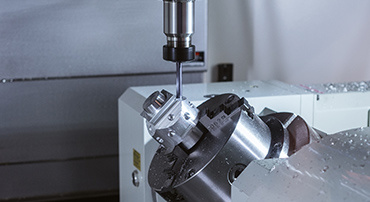29
2023
-
03
What are the main categories of molds
The mold (mú jù) is known as“ Mother of Industry” "The title" "refers to various molds and tools used in industrial production to obtain the required products by injection molding, blow molding, extrusion, die casting or forging molding, smelting, stamping, and other methods.". In short, a mold is a tool used to make molded items, which primarily processes the shape of the item by changing the physical state of the material being molded
There are many types of molds, which can be divided into:
① A mold for working metal
② Process non-metallic and powder metallurgy molds. Including plastic molds (such as dual color molds, compression molds, and extrusion molds), rubber molds, and powder metallurgy molds
According to structural characteristics, mold manufacturing is divided into planar blanking molds and cavity molds with space. Blanking dies utilize the size of the male and female molds to accurately fit, some even without gaps. Other forging molds, such as cold extrusion molds, die casting molds, powder metallurgy molds, plastic molds, and rubber molds, are cavity molds used to form three-dimensional shaped workpieces. Cavity molds have dimensional requirements in the three directions of length, width, and height, and have complex shapes, making manufacturing difficult. Mold production is generally single piece and small batch production, with strict and accurate manufacturing requirements. Precision processing equipment and measuring devices are often used
The plane blanking die can be initially formed by EDM, followed by form grinding, coordinate grinding, and other methods to further improve the accuracy. Form grinding can be carried out using an optical projection curve grinder, or a surface grinder with a mechanism for copying and polishing grinding wheels, or using a special form grinding tool on a precision surface grinder. Coordinate grinding machines can be used for precise positioning of molds to ensure precise aperture and pitch. Computer numerical control (CNC) continuous trajectory coordinate grinding machines can also be used to grind convex and concave molds of any curve shape. Cavity molds are commonly processed using profiling milling machines, electrical discharge machining, and electrochemical machining. The combination of profile milling and numerical control and the addition of a three way translational head device in EDM can improve the machining quality of the cavity. Adding gas filled electrolysis in electrochemical machining can improve production efficiency
The requirements for mold design and production are: accurate size, smooth surface; Reasonable structure, high production efficiency, and easy automation; Easy to manufacture, long service life, and low cost; The design meets the process requirements, and is economical and reasonable
Related news
What are the main categories of molds
2023-03-29

Add
Rui'an Hai'an Industrial Zone, Zhejiang Province

Tel

Mobile

Fax







